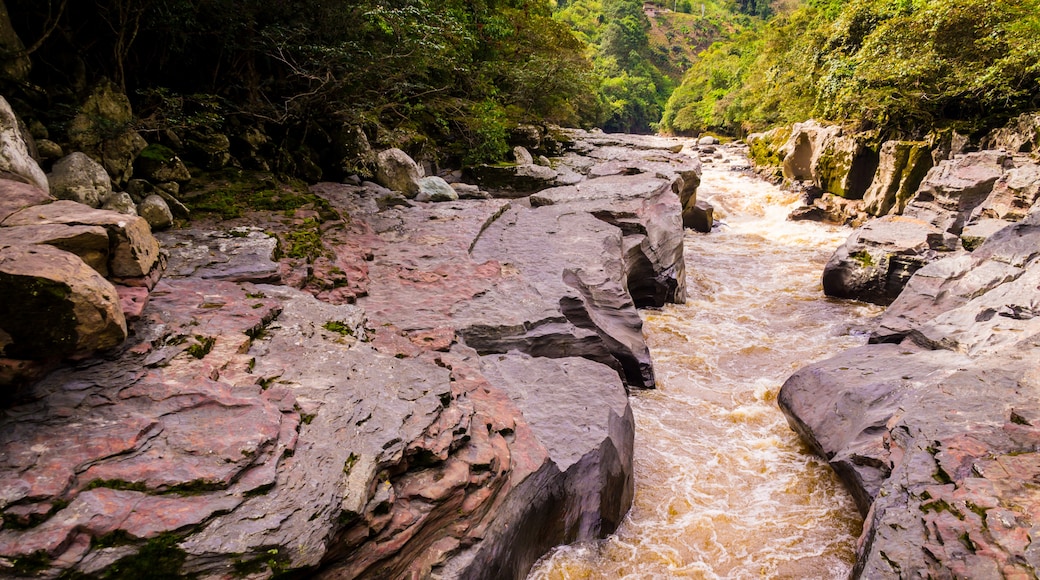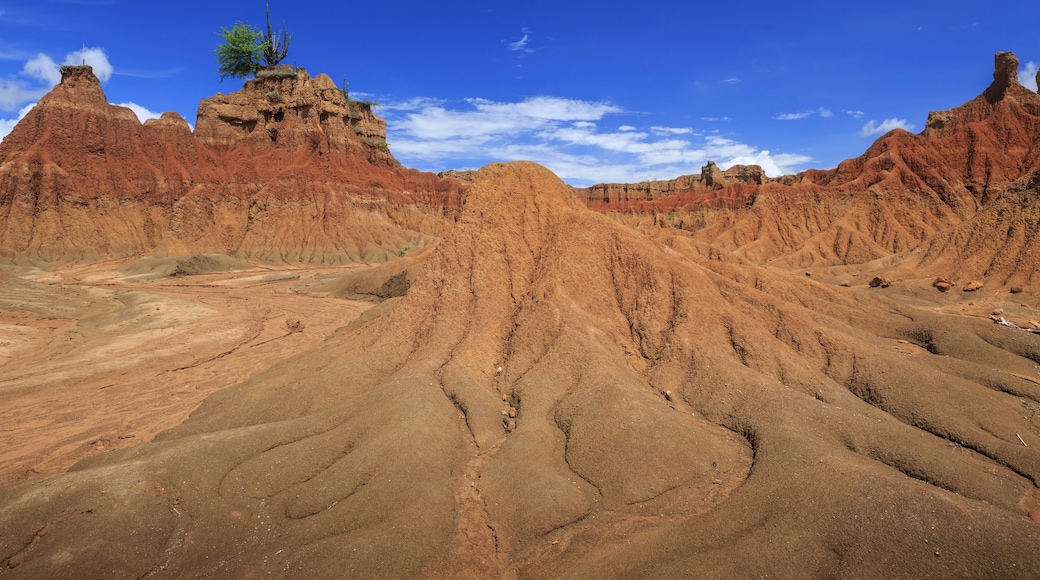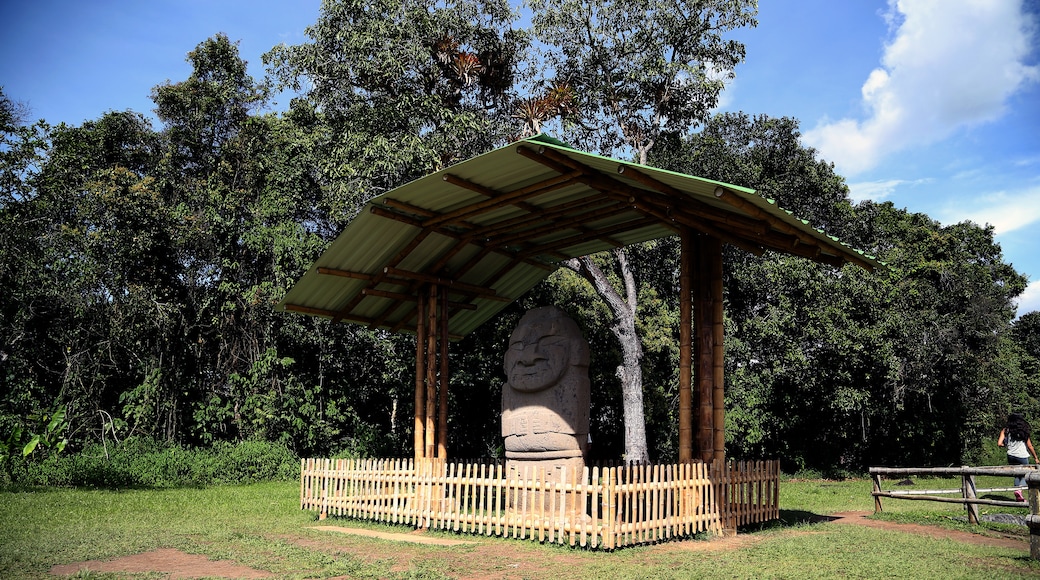Visit Huila to hike in a stark desert, walk to waterfalls, relax in hot springs and learn about mysterious civilizations. Huila is a central-western department situated in Colombia’s Andean Highlands, a region that showcases the diversity of the country’s topography. The Rio Magdalena, Colombia’s biggest river, cuts through Huila, which sits sandwiched between the Cordillera Central and Cordillera Occidental, two branches of the Colombia Andes.
Huila’s capital is Neiva, a city founded in 1612. Admire colonial-era landmarks, such as the Edificio Nacional and Neiva Cathedral, and find shade from the sun at Santander Park. See a slice of regional history at the Archaeology Museum, Huila Museum of Contemporary Art and Prehistoric Museum.
Go to the town of San Agustín and tour the San Agustín Archaeological Park. Spot a magnificent display of elaborate tombs, megaliths, sarcophagi, sculptures of mythological creatures and religious figurines. See similar examples at the nearby Alto de los Ídolos Archaeological Park and Alto de las Piedras Archaeological Park.
Enjoy hiking and wildlife spotting in Huila’s collection of national parks. Explore the karst caves and oak forest of Guácharos Cave National Park. Gaze up at the active Puracé Volcano and look for condor and spectacled bears in Puracé National Natural Park. Other parks worth visiting include the Cordillera de los Picachos National Park and Nevado de Huila National Natural Park.
Be sure to visit the moonlike terrain of the Tatacoa Desert and stargaze at the Tatacoa Observatory. Stand at the base of striking gray cliffs in Los Hoyos. Join a boat tour on the Betania Reservoir and rejuvenate the body at Rivera Thermal Pools. Marvel at the 1,312-feet (400-meter) tall Bordones Waterfall.
Reach Huila by flying to Neiva’s Benito Salas Airport from Bogotá and then get around using public buses or by organized tours. Be prepared for hot year-round temperatures and frequent showers. Plan your visit to coincide with colorful festivals. Among these is June’s Folkloric Festival and National Bambuco Competition, a celebration of the traditional bambuco music held across the region.




